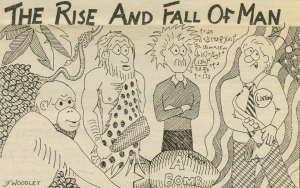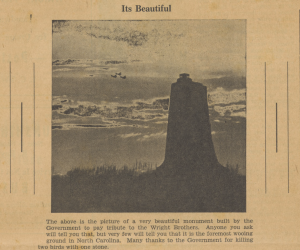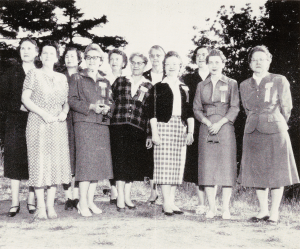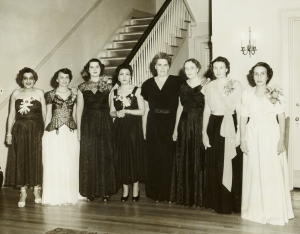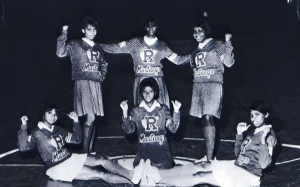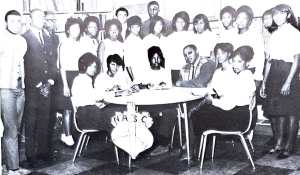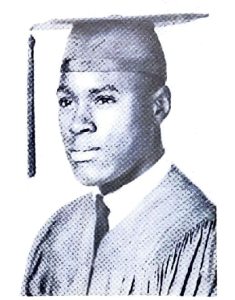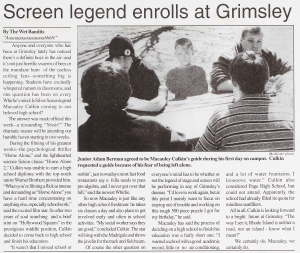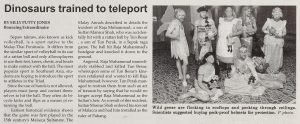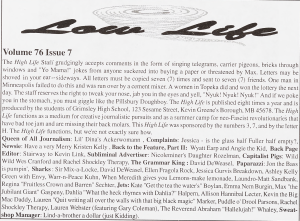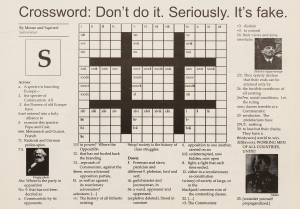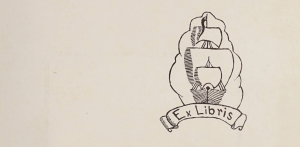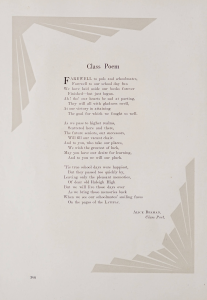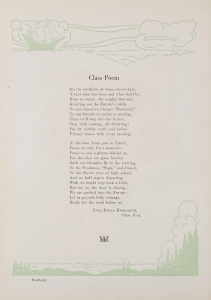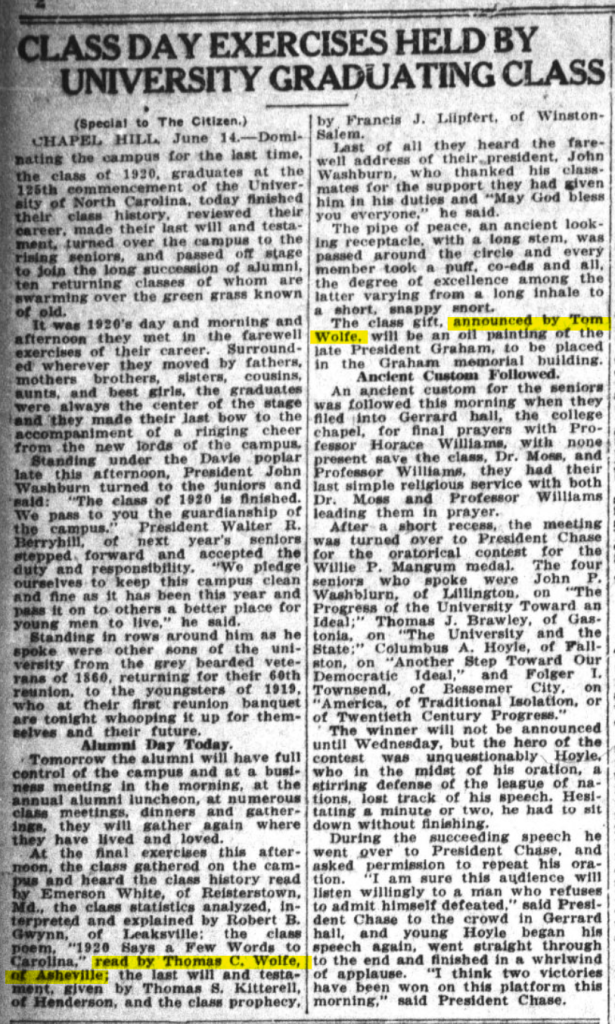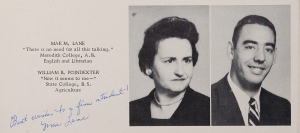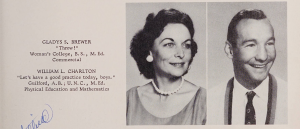
This week we have another 70 titles up on DigitalNC including over 1,000 issues of The Robesonian, 1,000 issues of The Western Sentinel, 3,000 issues of The Reidsville Review, 4,000 issues of The News and Observer, and almost 4,000 issues of the Salisbury Evening Post!
In the March 8th, 1914 issue of The News and Observers we have an article detailing a practice game played by the Baltimore Orioles while in Fayetteville. This happens to be the game where a 19 year old George Herman “Babe” Ruth hit his first home run as a professional baseball player. Ruth was also given his iconic nickname “Babe” while in Fayetteville on this trip.
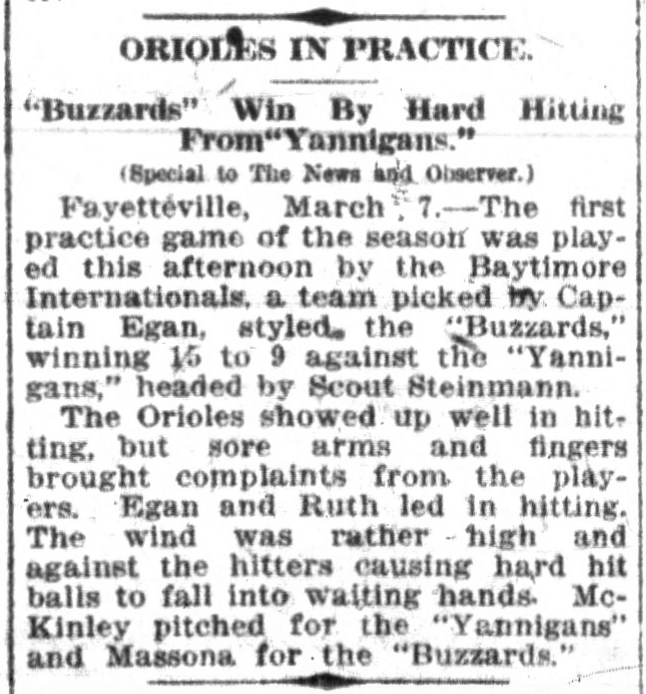
The News and Observer, March 8th, 1914
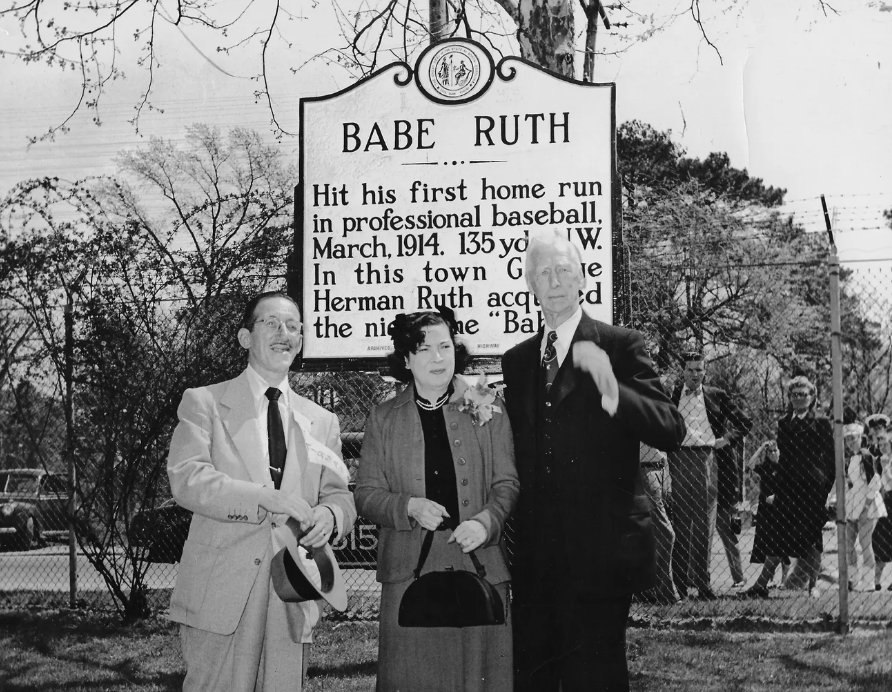
Image via The Fayetteville Observer
Over the next year, we’ll be adding millions of newspaper images to DigitalNC. These images were originally digitized a number of years ago in a partnership with Newspapers.com. That project focused on scanning microfilmed papers published before 1923 held by the North Carolina Collection in Wilson Special Collections Library. While you can currently search all of those pre-1923 issues on Newspapers.com, over the next year we will also make them available in our newspaper database as well. This will allow you to search that content alongside the 2 million pages already on our site – all completely open access and free to use.
This week’s additions include:
Asheboro
Asheville
- Asheville Daily Citizen (Asheville, N.C.) – 1891-1900
- The Citizen (Asheville, N.C.) – 1900
- Asheville Citizen (Asheville, N.C.) – 1906-1907
Belhaven
Brevard
Charlotte
Cherryville
Clayton
Concord
Cooleemee
Creedmoor
Durham
East Bend
Elizabeth City
Forest City
Gastonia
Goldsboro
Greenville
Kenly
Leaksville
Lenoir
- The Semi-Weekly News (Lenoir, N.C.) – 1900
- The Weekly News (Lenoir, N.C.) – 1902-1905
- The Lenoir Weekly News (Lenoir, N.C.) – 1905-1915
- The Lenoir News (Lenoir, N.C.) – 1906, 1914-16
Lincolnton
Lumberton
Mocksville
Mooresville
Moravian Falls
New Bern
Raleigh
Red Springs
Reidsville
- The Weekly Review (Reidsville, N.C.) – 1889-1899
- The Reidsville Review (Reidsville, N.C.) – 1899-1923
Rocky Mount
Rutherfordton
Salisbury
- Salisbury Evening Post (Salisbury, N.C.) – 1905-1923
- Salisbury Post (Salisbury, N.C.) – 1908-1912
- Yadkin Valley Herald (Salisbury, N.C.) – 1918-1919
Selma
Shelby
Smithfield
- Johnston County Record (Smithfield, N.C.) – 1933-1934
- The Smithfield Herald (Smithfield, N.C.) – 1977
Spruce Pines & Burnsville
Statesville
- Statesville Landmark (Statesville, N.C.) – 1874-1875
- The Landmark (Statesville, N.C.) – 1875-1903
- The Statesville American (Statesville, N.C.) – 1878
- The Statesville Mascot (Statesville, N.C.) – 1902
Taylorsville
Washington
- Washington Dispatch (Washington, N.C.) – 1861
- The North State Press (Washington, N.C.) – 1880
- The Washington Gazette (Washington, N.C.) – 1884-1887
- The Evening Messenger (Washington, N.C.) – 1896-1899
- The Gazette-Messenger (Washington, N.C.) – 1900-1904
- Washington Progress (Washington, N.C.) – 1930-1931
Waynesville
- Waynesville Courier (Waynesville, N.C.) – 1914-1915
- The Carolina Mountaineer and Waynesville Courier (Waynesville, N.C.) – 1921
Wilmington
- Wilmington Weekly Chronicle (Wilmington, N.C.) – 1840-1841
- Wilmington Chronicle (Wilmington, N.C.) – 1841-1845
- The Daily Journal (Wilmington, N.C.) – 1851-1852
- The Daily Wilmington Herald (Wilmington, N.C.) – 1866
Windsor
Winston-Salem
- The Western Sentinel (Winston-Salem, N.C.) – 1903-1922
- Twin City Sentinel (Winston-Salem, N.C.) – 1922
If you want to see all of the newspapers we have available on DigitalNC, you can find them here. Thanks to UNC-Chapel Hill Libraries for permission to and support for adding all of this content as well as the content to come. We also thank the North Caroliniana Society for providing funding to support staff working on this project.

